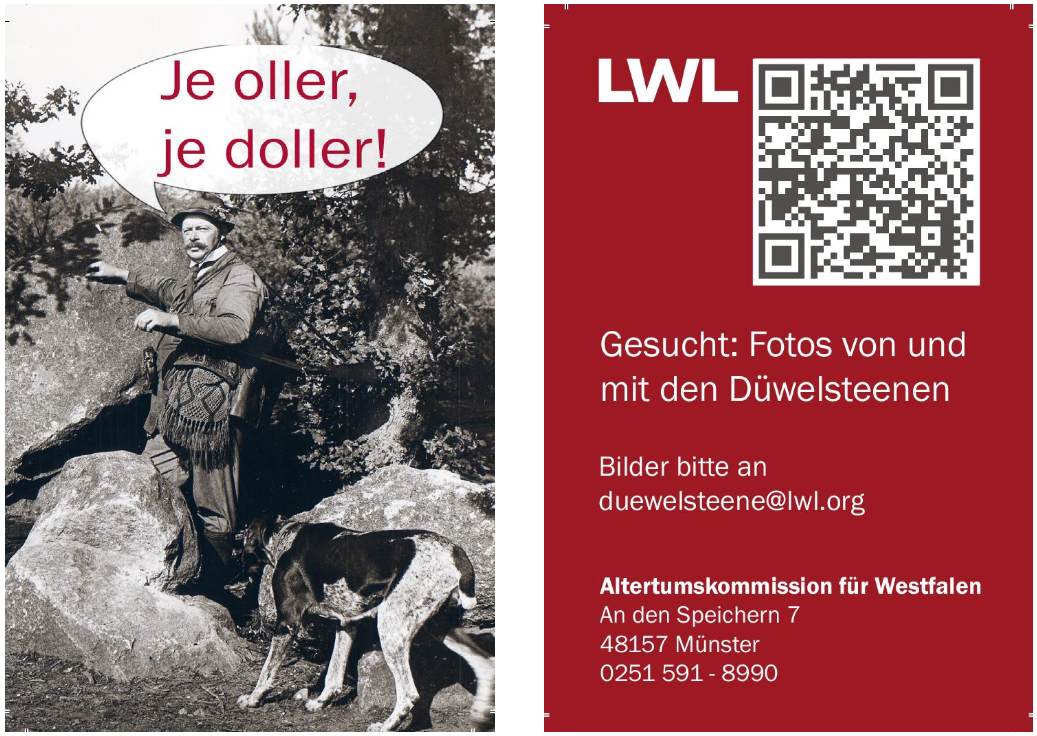
A project by the Altertumskommission for Westphalia was initiated to collect images from the megalithic tomb before the restoration of the Düwelsteene in 1932 through the participation of interested citizens. Only with the help of these photographs and the 3D model of the megalithic tomb was it possible to create the reconstructions.
The citizen science project was started on January 28th 2020 and ran for six months until July 2020. In 2018 the photographs were already being gathered by the Altertumskommission for Westphalia, but the official citizen science project began in 2020. The accumulation of these images of the Düwelsteene, from citizens of Heiden and surrounding areas, from the archives of the Altertumskommission or the Ruhr Museum, made it possible to create a reconstruction of the megalithic tomb.
Without the photographs and without the 3D model of the tomb (especially the cut out models of each single stone), the reconstruction of the Düwelsteene in 1932 and subsequently 3000 BC would not have worked. It was only possible to find the correct positioning of the megaliths, because they were 3D models, which could be rotated and moved, and thus be compared to the images that were sent in by the participating citizens.

Call for photographs of the Düwelsteene (Image: LWL Altertumskommission für Westfalen)
It also means that the reconstruction of the tomb in 1932 is based on sources and has the potential to help with a better reconstruction of the Düwelsteene at around 3000 BC. Through the participation of the citizens the reconstruction was not only made better and more precise because of the high number of images (around 100 photographs) that were send in. Citizen science projects also helps to involve the residents or even visitors in the protection and preservation of such historical monuments.
- - - - - - - - - - - - - - - - - - - - - - - - - - -
Sources and further reading: